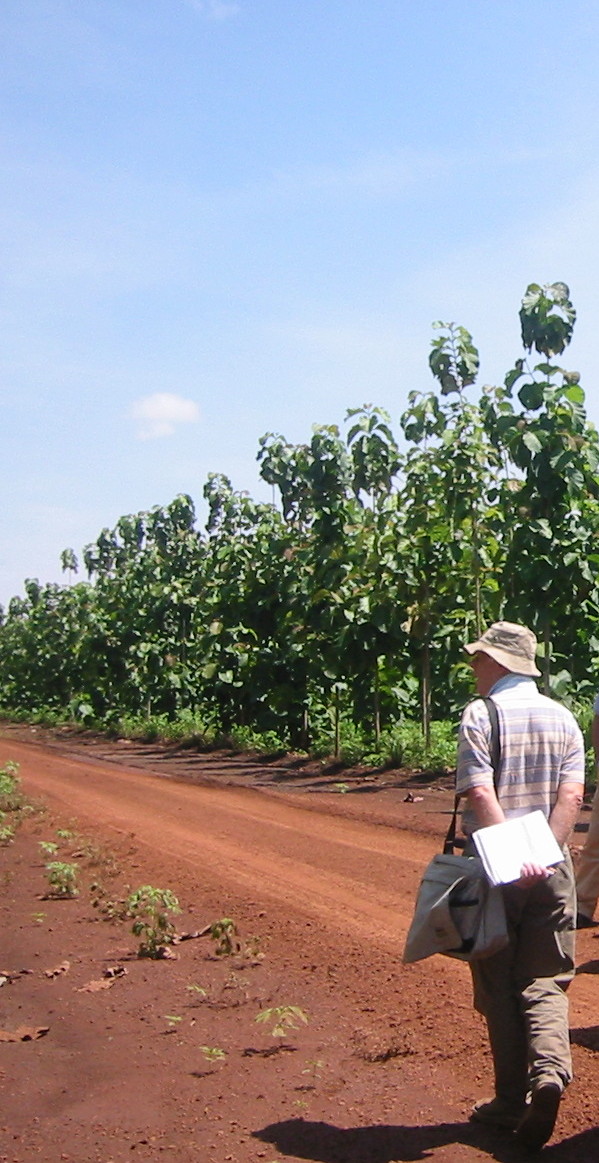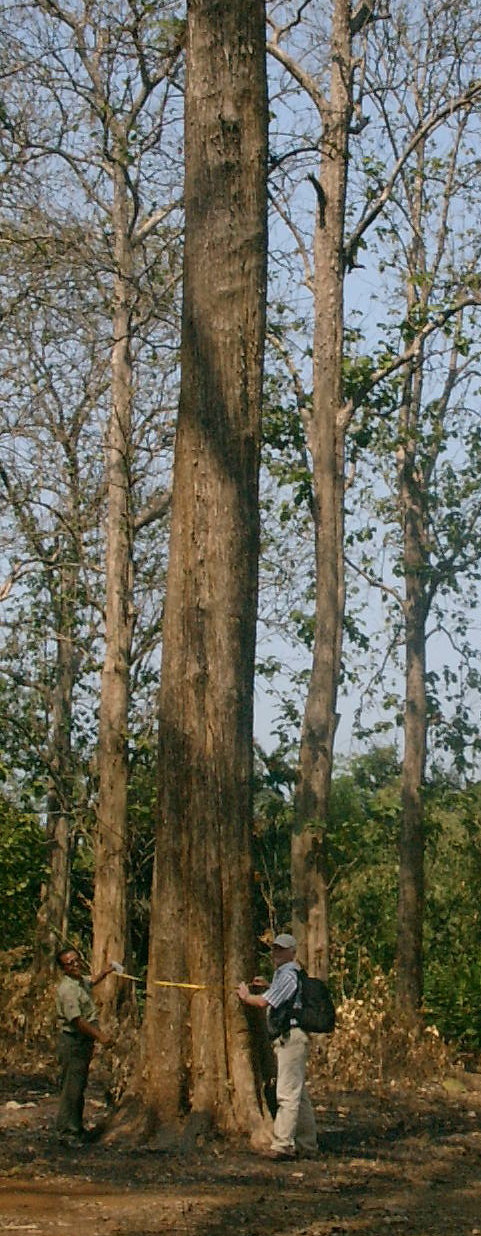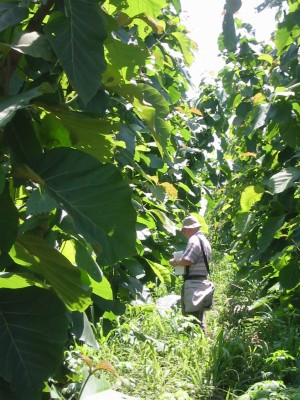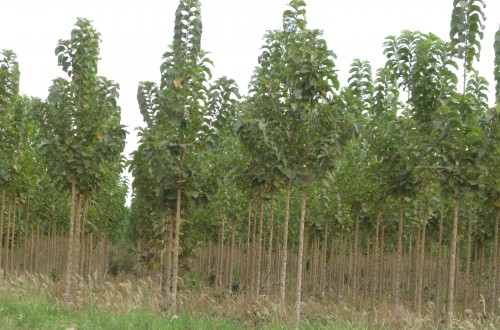Poor decision making
The year 2012 marks my official retirement date. Normally retirement is a time to highlight one’s outstanding achievements and contributions. Unfortunately, as I glance back I see more shipwrecks than completed voyages. It is difficult to admit this; but my career was almost a total failure. If I seek excuses, I have few. I must place the blame on a lot of poor decision-making on my part.
The first poor decision was my choice of career. I could not have become a forester - and especially a tropical forester - at a more inopportune time in history. Throughout the period 1972-2012 deforestation in the tropics was running at historically high rates, reaching on average, 13 million ha/annum in recent years.
The second inadequate decision was to concentrate on teak. The species has been in decline over the last four decades. Although 30 million ha were under teak forests in the early 1990s, resource depletion had gone beyond the point of sustainable commercialisation by then. Logging bans had to be applied in Thailand in 1983; India in 1987 and Laos in 1989. Even in Myanmar, where commercial management has continued to the present day, the extension of teak forests has been reducing; the quality declining and the yield dropping. This reflects poor management. Little wonder, then, that the country is set to ban exports of the species by 2014.



L-R: Raymond inspecting teak in Brazil; Indonesia old teak; Raymond inspecting teak in Brazil.
The third ill advised decision I made was to become involved in development, yet maintain an emphasis on commercial aspects of forestry. The focus in the early 1970s was changing from industrial activities towards community, social or agro-forestry; that is: forestry for the people. As commercial activities and wood production began to be marginalised and, as donor funding shifted in line with these trends, teak as a species for development was sidelined. Counter to the norm, I continued to develop models for growth and yield in teak.
Lopsided development
In the wake of the change of emphasis from commercial to social endeavours in forestry, a major problem has become apparent. Demand for commercial high-grade tropical hardwoods, running at around 90 million m³per year, depends largely on deforestation and degradation of natural forests. The unsustainable nature of the supply situation is known as the tropical hardwood crisis. I do not suggest that social dimensions should have been ignored; the mistake was to have created an imbalance. If any aspect of forestry is ignored, the consequences will be detrimental to the sector as a whole.
During the 1980s, development agencies did make a concerted attempt to combat tropical deforestation which became a highly publicised global concern. The Tropical Forestry Action Programme (TFAP) was an effort to get to grips with a problem that had reached alarming levels. However, some NGOs, claiming to represent the environmental movement, accused TFAP of irresponsibility because it considered logging natural forests. TFAP protested that its aim was to shift dependency of tropical timber supply from unsustainable to sustainable practices. As a result of the disaccord, donor governments were confused about which policy to follow; they did not support TFAP adequately and the initiative sank.
It has become clear that an inordinately large area of the natural forests, running to tens of millions of hectares would be required to satisfy sustainable commercial demand for tropical hardwoods. Most of this area is totally inaccessible. Therefore, dependency on natural ecosystems alone for the supply of these timbers is not feasible.
The lack of complementary commercial high-grade hardwood plantations to take the pressure off natural forests must be addressed. But, some influential entities question any organisation that considers developing industrial plantations, especially monocultures, to solve the crisis. Monocultures are deemed to be a bad thing among these groups. As a result the donor community has been reluctant to appear to be supporting commercial plantations.
Without a concerted effort to manage natural forests in a sustainable manner on the scale required, and without creating backup commercial plantations, where is the supply to come from? The only logical answer is that - in the absence of a comprehensive workable programme - supply will continue to come from deforestation and degradation until it runs out. Then the world will have to accept that tropical hardwoods are a thing of the past.
Clonal teak; a revolution in teak cultivation
It can be seen that tropical forestry, under the influence of development agencies and NGOs over the last four decades, has tended to focus on a select range of priorities. Unfortunately, these priorities did not embrace the comprehensive needs of forestry. The creation of tropical hardwood supply sources on the scale required to satisfy the growing market demand was neglected. Towards the end of the 1980s the real significance of lopsided policies became clear.
Unscrupulous elements could see clearly that predicted shortages of tropical hardwoods pointed to very promising returns. They discovered that teak is a unique hardwood and, unlike many other species in its category, can be grown in plantations. Its silviculture is well understood and it is a relatively rapid volume producer given the right conditions. They presented logical and seemingly watertight cases to attract investments on a large scale to new plantation schemes. Unfortunately, their main objective was to make money quickly.
A number of new companies generated exaggerated forecasts of growth for the species and combined these predictions with prices that were only applicable to the best-quality forest teak. The combination of inflated growth rates and prices produce exciting predictions about returns for investors who had little technical or financial knowledge about the species. It was regrettable that the development agencies and NGOs, which had neglected the hardwood sector had, by the late 1980s, lost their authority to provide a professional opinion to counter the deceit and in the vacuum a rash of questionable retail schemes mushroomed around the world.
Failure to regain balance
I set up TEAK 2000 (currently TEAK 21) in 1996 to combat the hardwood crisis and redress the imbalance. The organisation recognised the many barriers to success, including the need to:
- Obtain a sustained output of hardwoods from managed forests combined with new plantations on a large scale;
- Attract the high levels of long-term finance required through innovative methods (e.g. through insurance and pension funds; forest bonds and many other instruments);
- Incorporate a wide spectrum of growers into the endeavour, particularly communities working with the private sector;
- Overcome technical barriers, including the lack of:
- Superior genetic material for plantations;
- Flexibility in silviculture to suit different categories of growers;
- Wide application of best-practice management techniques;
- Optimal use of good quality land for hardwoods - without depressing food supply;
- Production of certified high-quality end products;
- Change attitudes, particularly amongst donors, governments and NGOs in an era of environmental and social forestry in which timber production on an industrial scale was regarded with some suspicion.
The Consortium Support System (CSS) was the proposed mechanism through which TEAK 21 would develop a sustained supply-base of hardwoods for the marketplace in the long term. The components of the CSS include services (overall coordination, investment facilities, technology transfer, tree improvement and quality control) and support entities (governments, international donor agencies and NGOs).
Unfortunately, TEAK 21 failed to make headway and is to be closed down. I cannot exonerate myself from this failure and readily admit - in hindsight - that I did myself no favours by persisting to persuade development organisations, despite their clear reluctance to engage. This was the fourth ill advised decision of my career.
I feel strongly that the aid agencies and many NGOs have been prevented from embracing the CSS because of a group-think mentality that is uncomfortable with timber production on a large scale, and particularly with the involvement of the private sector despite their potential in the development field. Whatever the reasons for past failures, the tropical hardwood crisis has not abated and the TEAK 21 proposals are every bit as valid today and more urgent than they were in 1996.
Looking back
I now look back and contemplate my career. After writing and speaking many hundreds of thousands of words in defence of tropical forestry and teak, I ponder on this expenditure of time and effort; my words have not changed the situation for the better. I also ponder on what I should have done with my life. The wisdom of Jonathan Swift springs to mind. I use his wisdom to illustrate an answer to my question, though I take the liberty to change some words (in italics) to suit the point.
“That few campaigners, with all their schemes, are half so useful ... as an honest forester; who, by skilful draining, fencing, manuring, and planting, hath increased the intrinsic value of a piece of land; and thereby done a perpetual service to his country.”

- Log in to post comments

